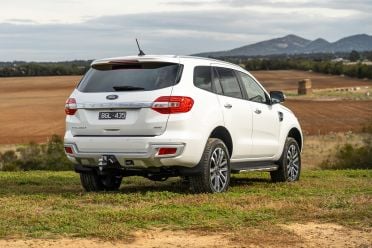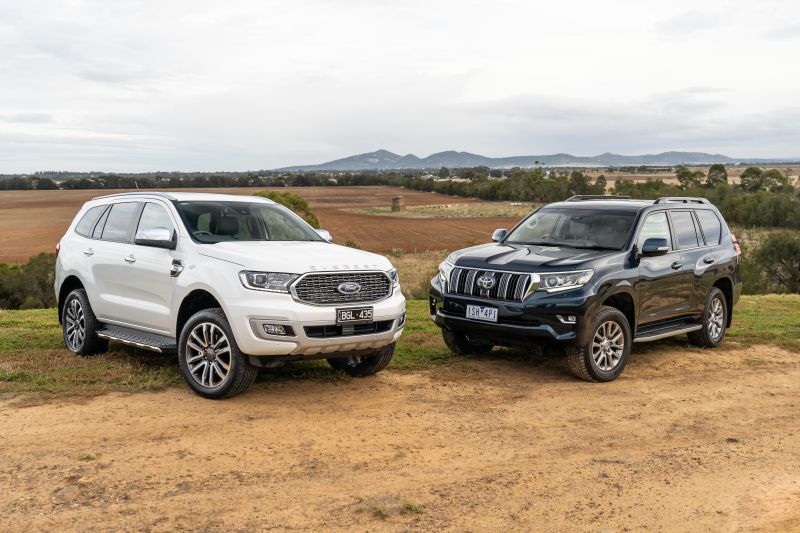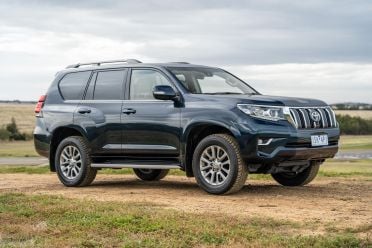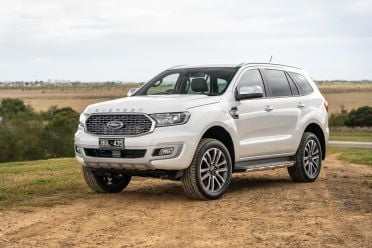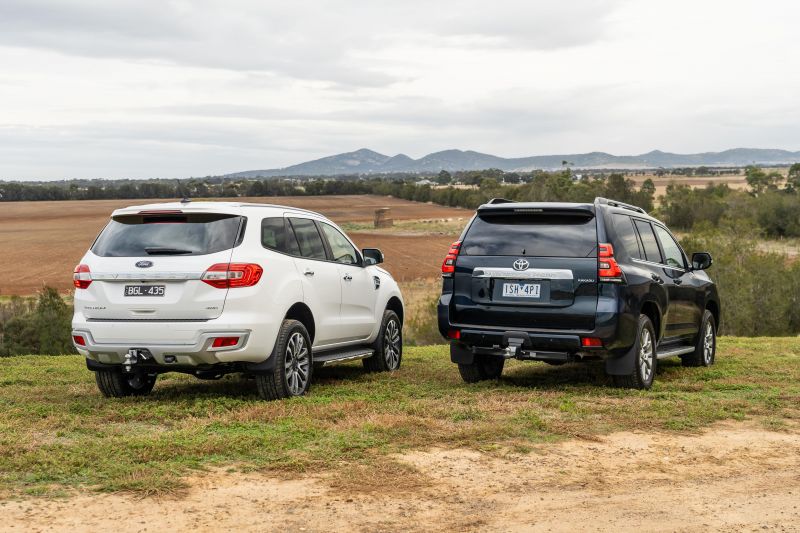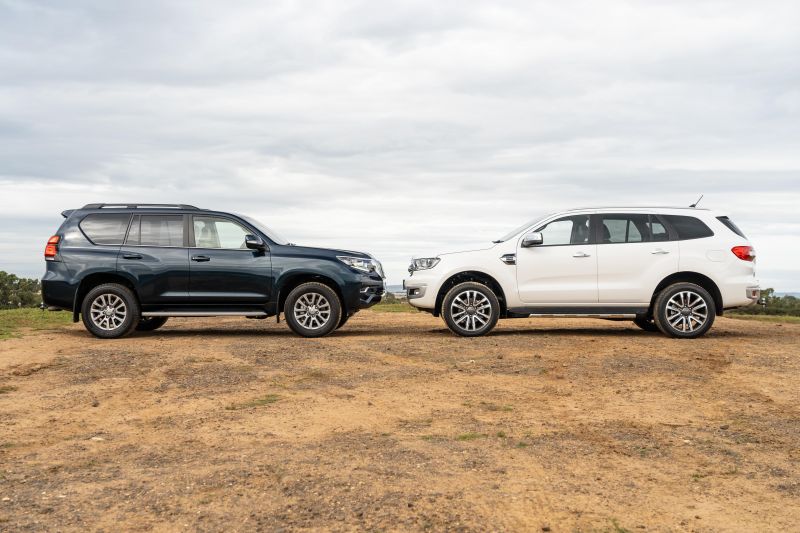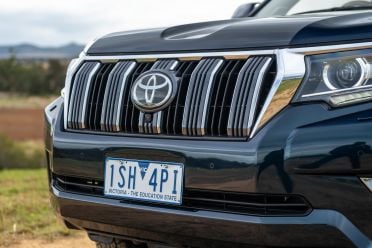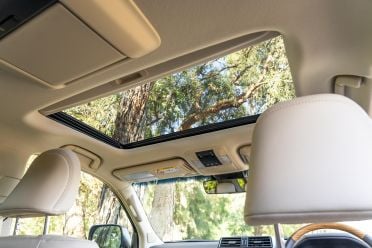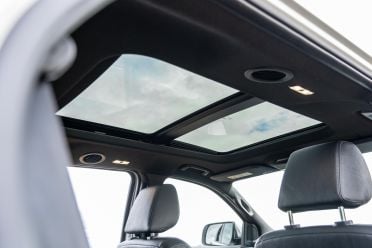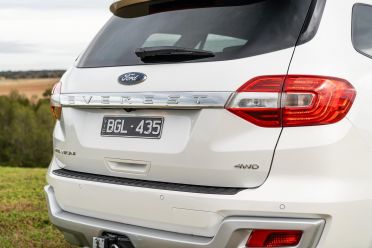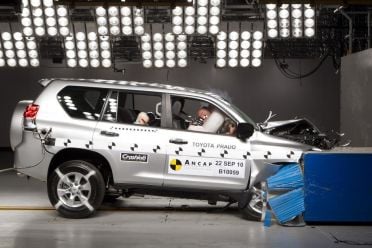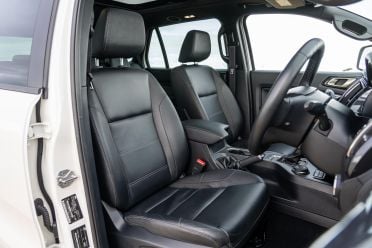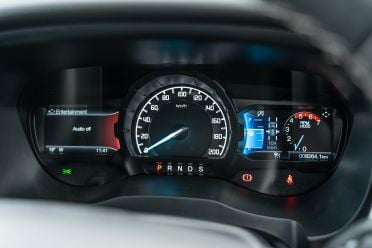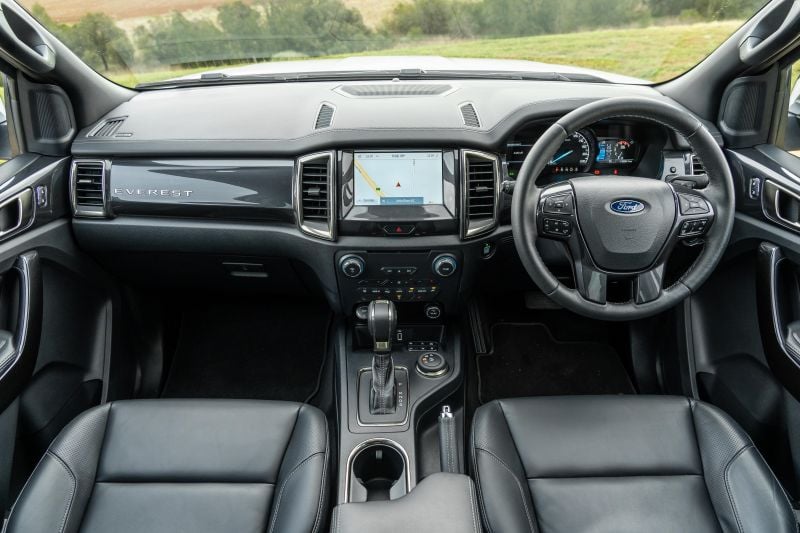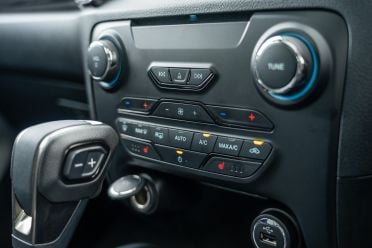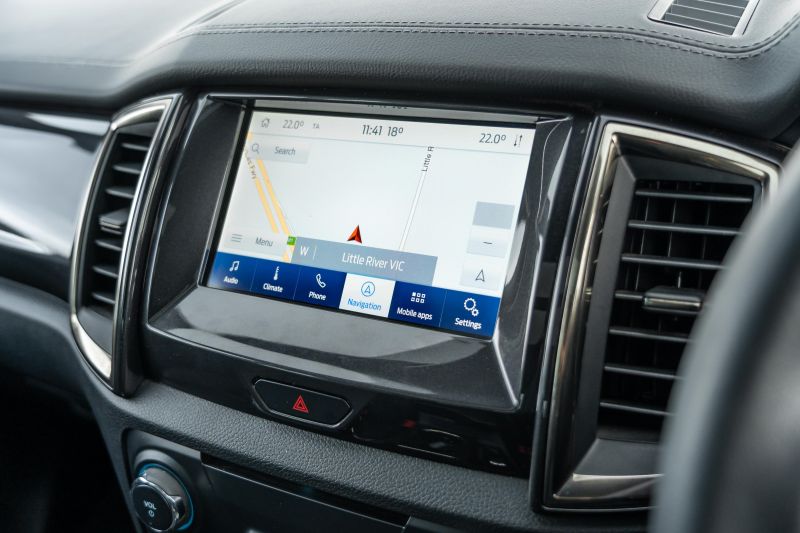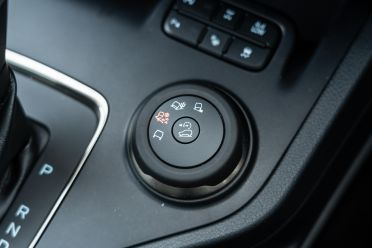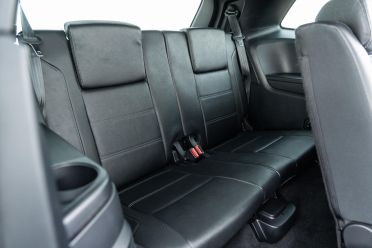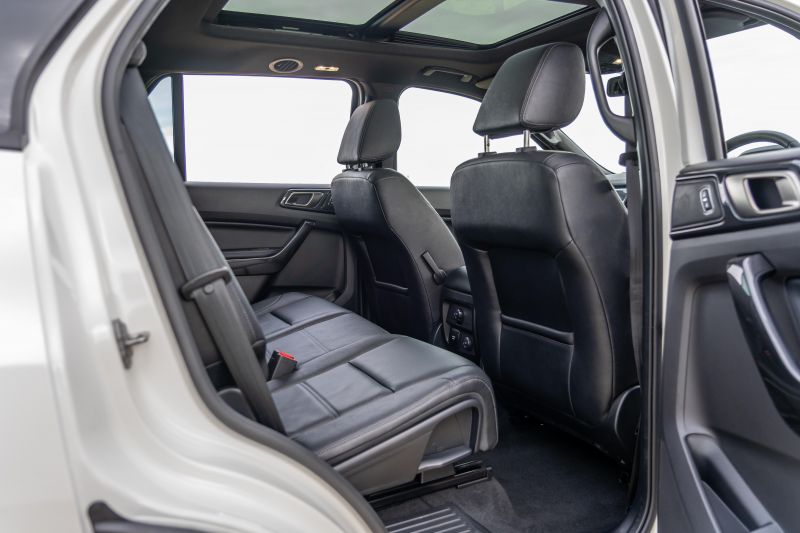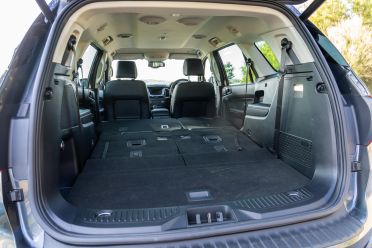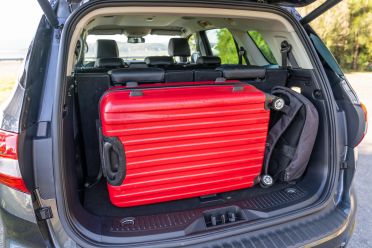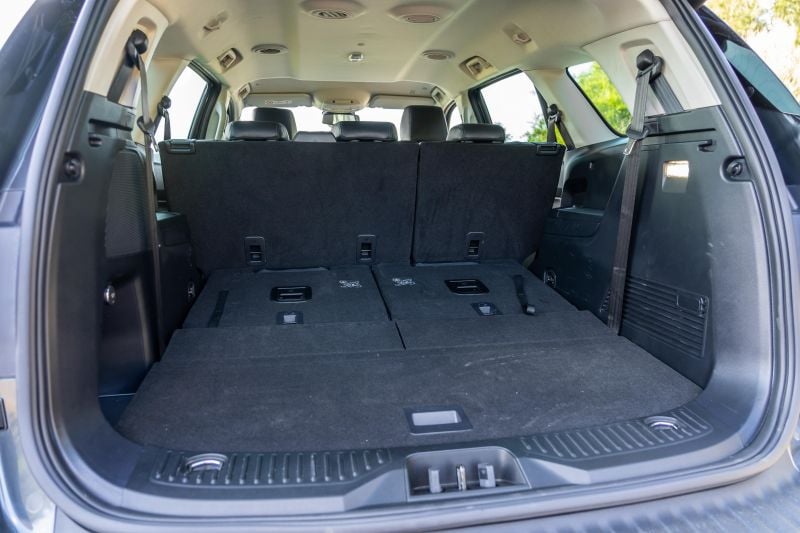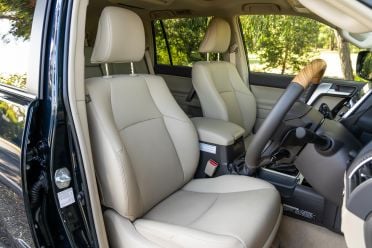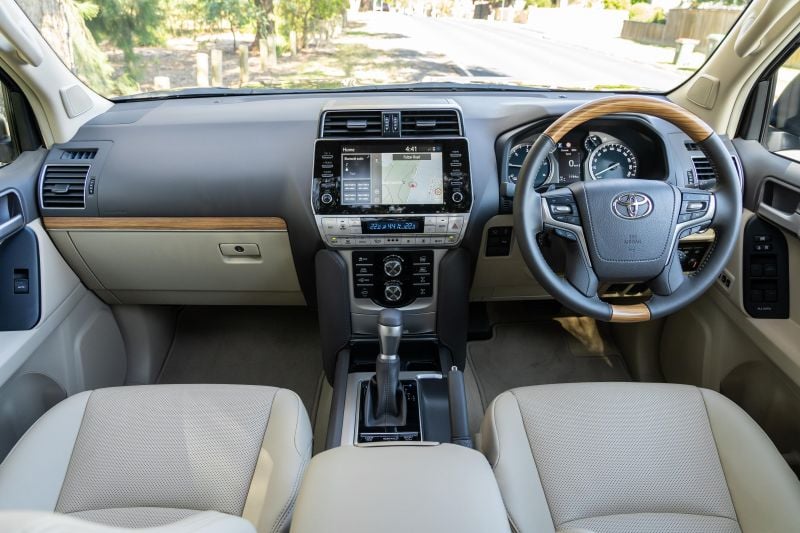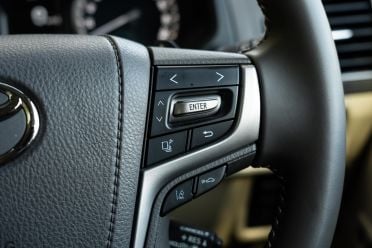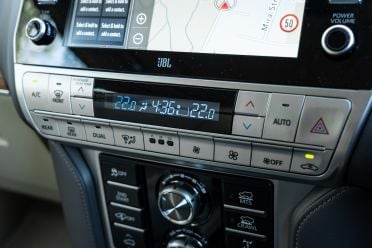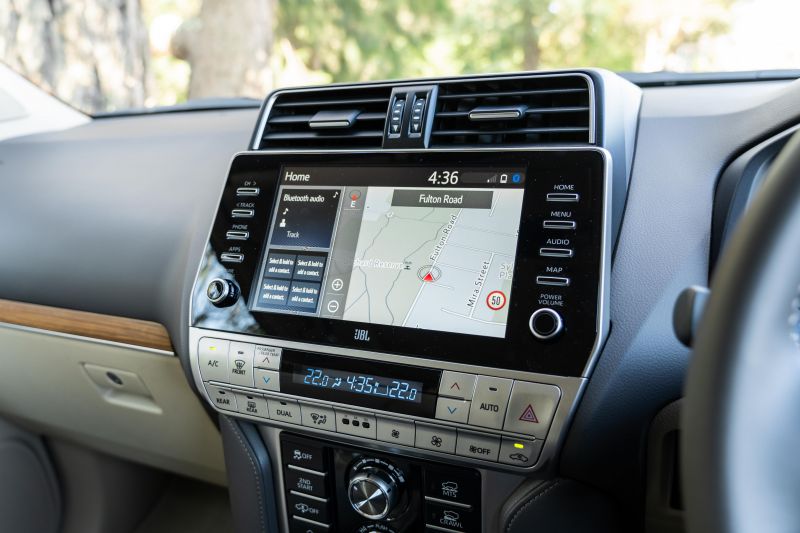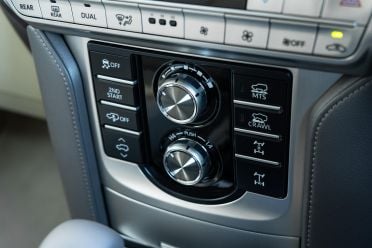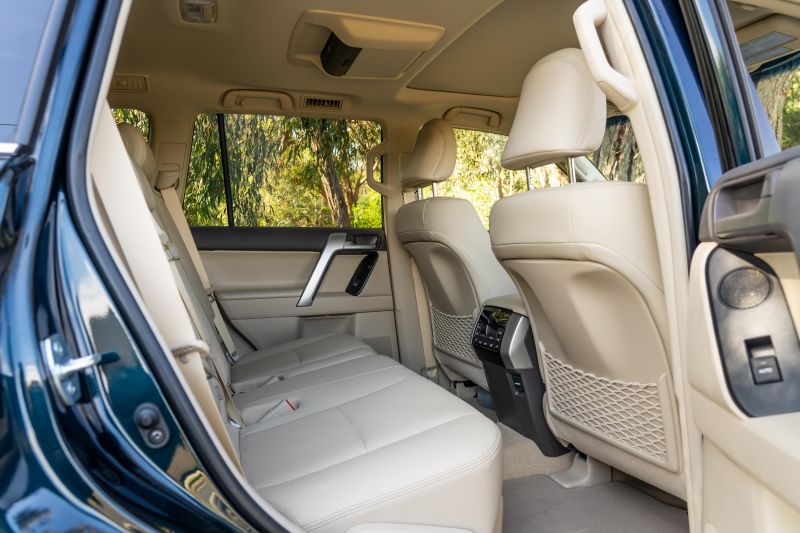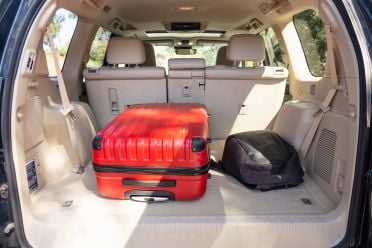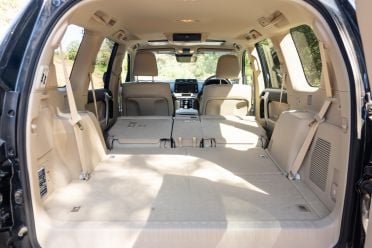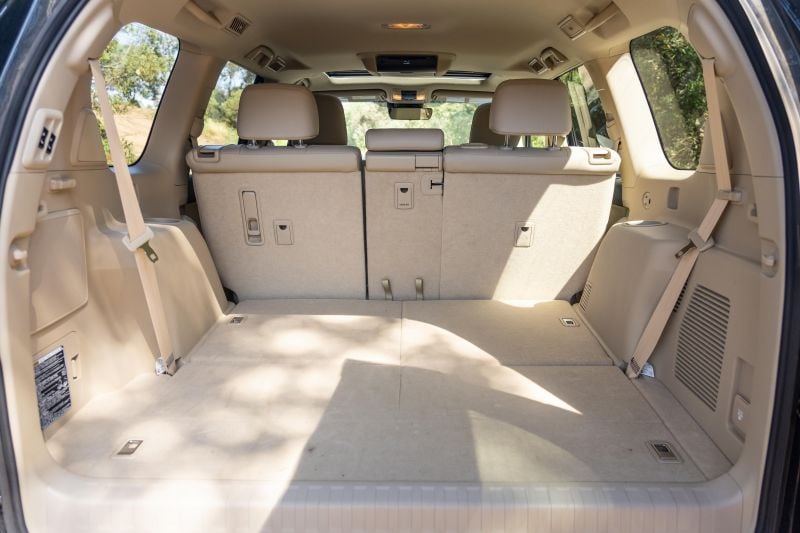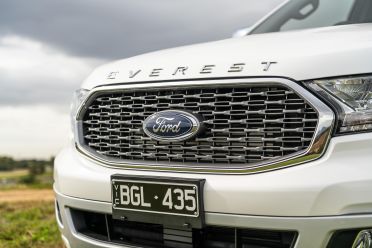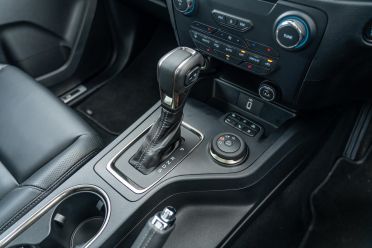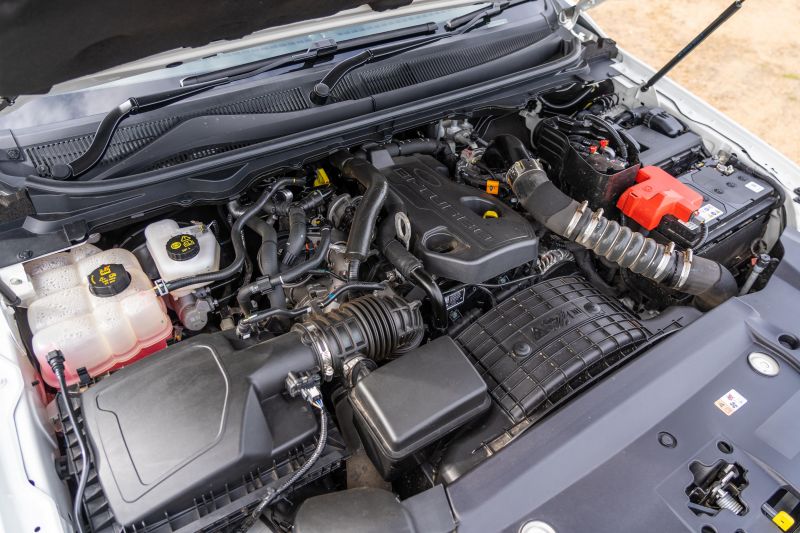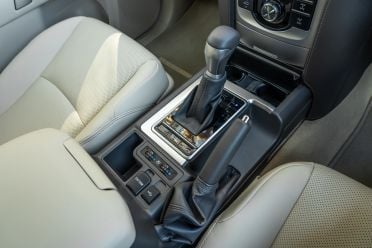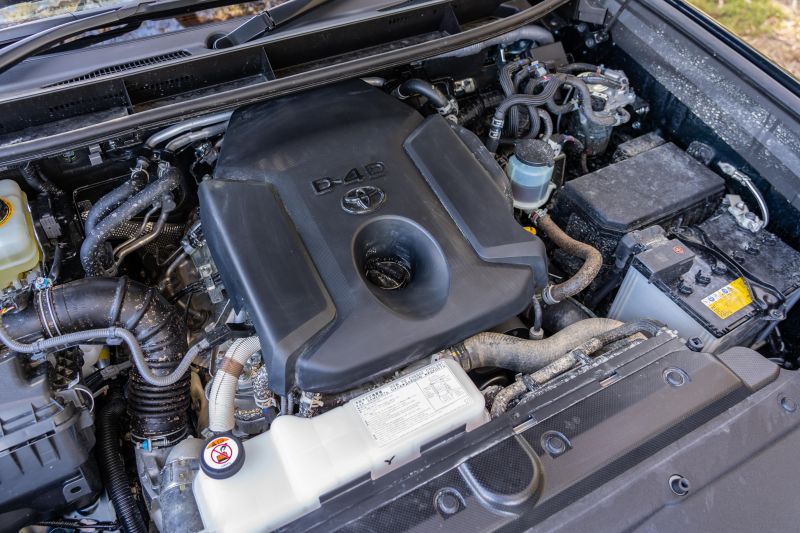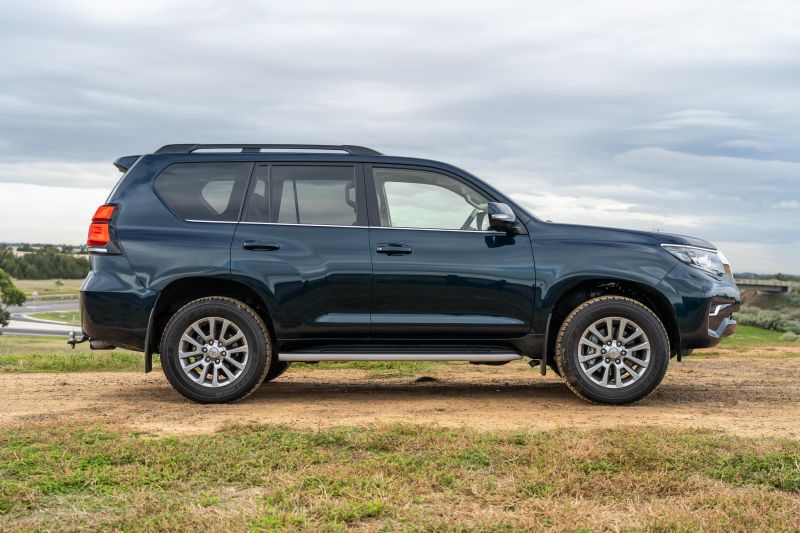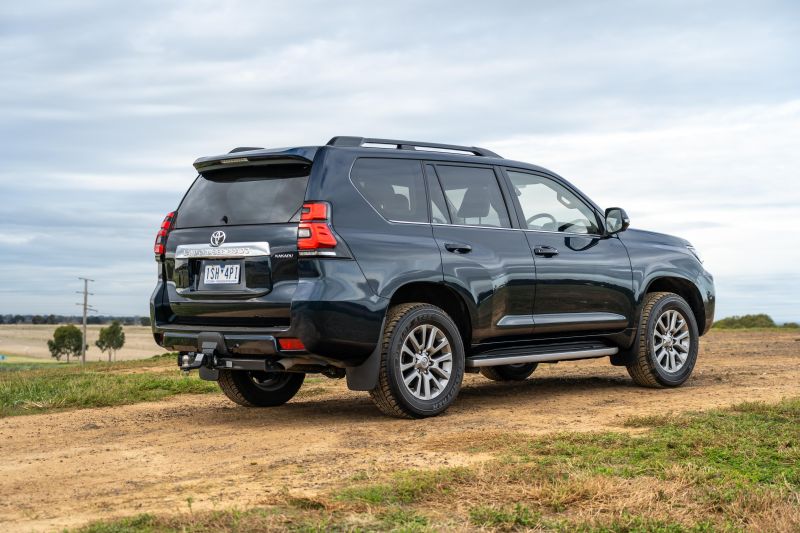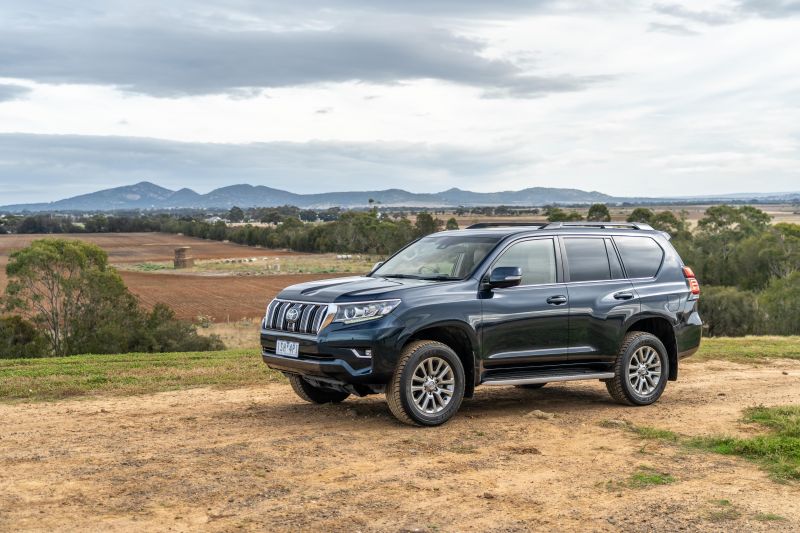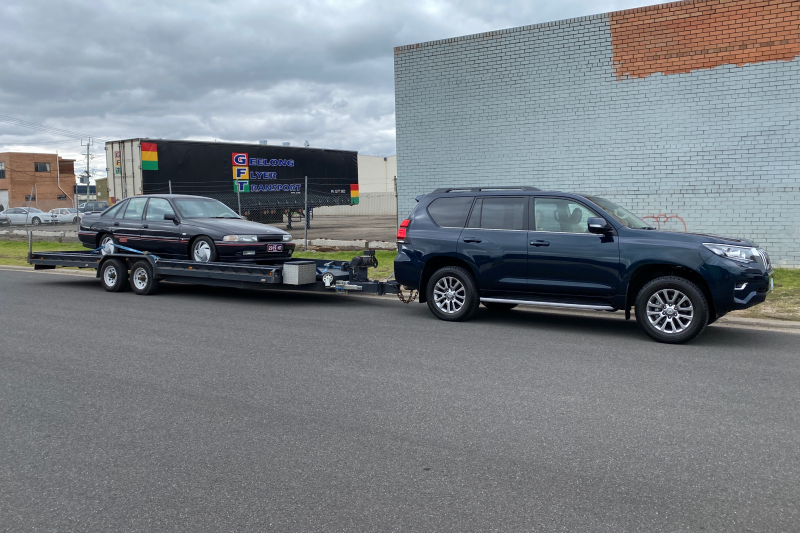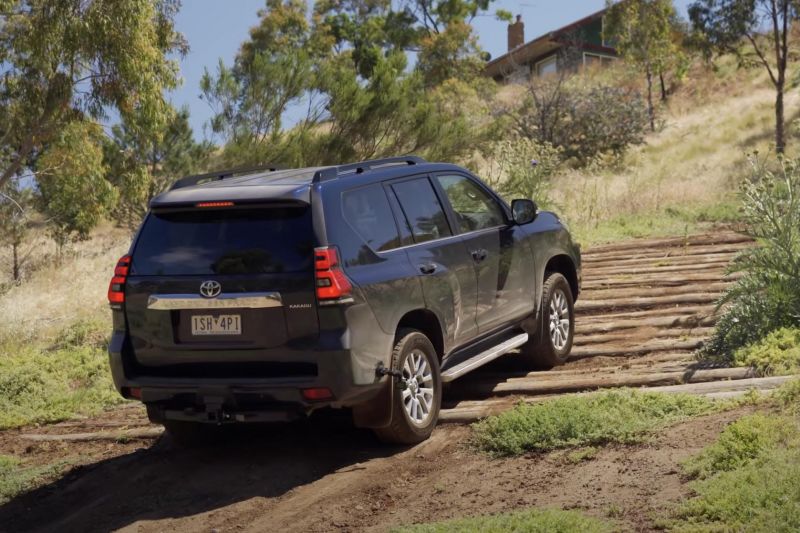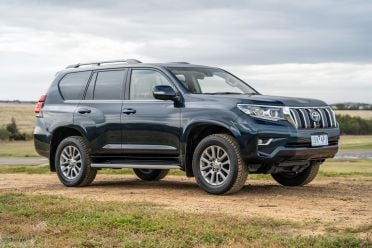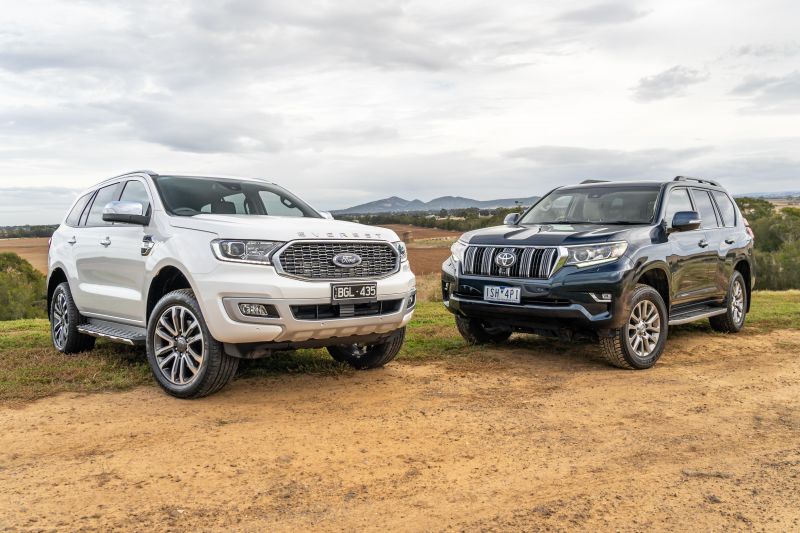Vehicles designed to take your and your family into the wild outdoors have never been more popular – or more expensive – than they are right now.
With the pandemic spelling the end of international trips for some time to come, the great Aussie road trip has filled the void.
Two of the best proper 4x4s that can do this job while offering plenty of luxury and comfort are the iconic Toyota Prado and the increasingly big-selling Ford Everest.
Despite its advanced age, the Prado has a dominant 15.6 per cent market share in the Large SUV market segment this year, equal to 5347 sales to the end of April.
The Everest is gaining ground. It’s found 2391 sales this year for 7.0 per cent market share, but its sales are up 36 per cent compared to growth for the Prado of 9.1 per cent.
Here we drive both in their respective top-of-the-range variations, called Everest Titanium and Prado Kakadu.
How much?
The 2021 Ford Everest Titanium wears a sticker price of $73,190 before on-road costs, which equates to a drive-away price of about $80,000.
However at the time of writing the Everest Titanium was actually being advertised for $72,690 drive-away.
The 2021 Toyota Prado Kakadu wears a list price of $87,030 before on-road costs, which equated to a rough drive-away price according to Toyota’s website of $95,000.
Toyota’s offers page made no mention of Prado campaign pricing.
You can achieve something closer to parity by stepping down into a Prado VX specification which wears a list price of $76,380 and a drive-away price of around $83,800.
Drive-away pricing:
- Ford Everest Titanium: $72,690 on special offer
- Ford Everest Titanium: $80,000 if no offer active
- Toyota Prado VX: $83,800
- Toyota Prado Kakadu: $95,000
What do you get?
Both the Everest and Prado are well-equipped, as befits their flagship spec levels. Common features to both include:
- Sunroof
- Privacy glass
- Bi-LED headlights
- LED daytime lights
- Front and rear parking sensors
- Rain-sensing wipers
- Leather-accented seats
- Heated front seats
- Powered driver’s seat movement
- Proximity key with button start
- Auto-dimming rear-view mirror
- Climate control
- Satellite navigation
- Apple CarPlay and Android Auto
- Bluetooth
- Digital radio
The Ford Everest Titanium is fitted with 20-inch wheels compared to the Prado’s 18s, and a powered tailgate.
But the Prado Kakadu alone offers ventilated front seats, heated rear seats, three-zone climate control instead of two, four more speakers, a refrigerated console, and a 360-degree camera.
What if you want to get a Prado VX rather than a Kakadu? You’ll save about $11,000 but lose the following features found in our test vehicle:
- Sunroof
- Faux wood steering wheel
- Paddle shifters
- Drive mode selector
- Four-link rear suspension with air springs
- Five-speed 4×4 crawl control
- Adaptive variable suspension
- Multi-terrain select modes
- Rear-seat entertainment system
MORE: 2021 Ford Everest price and specs
MORE: 2021 Toyota Prado price and specs
Are they safe?
Independent crash tester ANCAP awarded the Everest five stars with a 2015 date stamp and a score of 35.98 out of 37. Meanwhile the Prado scored five stars but carries an even older 2011 date stamp, and a score of 35.11 out of 37.
Importantly, both vehicles have been updated to include active safety systems since these tests, to stay as contemporary as feasible.
Safety features in common include:
- Seven airbags
- Autonomous emergency braking with pedestrian detection
- Lane-departure warning
- Lane-keep assist (Prado by wheel braking, Everest by steering intervention)
- Blind-spot monitoring
- Rear cross-traffic alert
- Adaptive cruise control
- Traffic sign recognition
The Ford Everest also adds auto parking assist.
What are they like inside?
Ford:
The leather front seats are quite supportive and feel hard-wearing, and the driver gets power adjustment. Both front occupants also get butt-warmers.
The steering wheel has logical buttons and a padded rim but lacks telescopic reach adjustment, which I maintain is an ergonomic oversight.
It’s very like the related Ford Ranger ute up front, with the driver instruments being identical (analogue speedometer in the centre, two screens either side).
The fact you cannot view both a tachometer and digital speedo concurrently and instead must cycle to each on the right-hand-side screen is annoying.
The centre fascia uses hard but rather downmarket-feeling plastic trims and looks quite button-heavy and utilitarian for a $70,000-plus luxury 4×4. That said, the shiny grey plastic trims do add a degree of difference.
The 8.0-inch touchscreen is good though, since Ford’s SYNC 3 infotainment system is among the best in the business: simple access to sub menus, quick processing, sharp graphics, no bugs, good mapping, and a clear-solution camera.
The fact you can control ventilation and audio through buttons and dials is good.
Along the transmission tunnel you’ll find a circular dial to select various surface-dependent driver modes; a bank of buttons to engage the park assist, rear diff lock, park assist, and low-range; plus buttons to turn of the stop/start and stability control systems.
To the back seats: I’m 194cm and yet had decent legroom and foot room behind my own driving position, but headroom is tighter than it should be on account of the sunroof.
Middle-seat-row amenities include vents in the roof, a flip-down armrest, reading lights, reclining backrests, door bins, separate ventilation fan controls, and both 12V and 230V inverter sockets.
Access to the third row is best found on the passenger side away from traffic. You simply pull a lever atop the seat which tilts the backrest and slides the base in one move, giving you access to the kid-friendly third row of two seats replete with overhead ventilation.
There are two ISOFIX anchors and five top-tether points.
The boot area is accessed by an electric tailgate, and contains a 12V socket.
The third-row seats also fold flat and raise up electrically via buttons to save you the effort, which is something you’d expect in a Volvo. This nifty feature is part of the $550 Premium Package which also adds a full-size alloy spare.
With seven seats in use there’s a 390mm (loading lip to back seat) x 1090mm wide x 770mm tall storage area available. With the third row folded this grows to 1120mm x 1100mm x 770mm. With the second seating row also folded, the loading floor is 1830mm long – exactly six-foot – behind the centre console lid.
Using VDA measurements the capacities are 249 litres in seven-seat mode, 876L in five-seat mode, and 1796L in two-seat mode.
Toyota:
On one hand the Prado is looking a little dated inside, but it feels like a step up over the Everest in terms of material quality and a sense of open space. That’s despite the fact it’s actually no bigger than the Everest.
Our test car came with beige leather though you can order the vehicle with black trim instead. It felt a little more supple and high-end than the Ford’s, and those front seats also come with ventilation as well as the heating found in both.
The steering wheel has powered telescopic and up/down adjustments, and is wrapped in leather and polarising woodgrain. The wheel buttons are more tactile, and the twin analogue gauges flanking a centre trip computer seem more logical to me.
The fit and finish and choice of trims feel more high-end in the Toyota, down to simple things like wood- and metallic-look inserts, knee padding, and damped buttons. It also has a refrigerated chiller box for a centre console!
The centre fascia features a 1.0-inch-larger touchscreen than the Ford, and an overhead-view camera, though the Ford’s infotainment system and user interface feels a little more contemporary.
The ventilation controls are simple buttons, finished in tasteful silver.
There’s a bank of buttons and dials below to control the 4×4 crawl modes, rear suspension, ESC, diff locks, 4×4 modes, and crawl speeds, the latter of which corresponds to a warning on the trip computer.
In short, the Everest’s front cabin feels like a Ranger’s whereas the Prado’s feels bespoke and has perceived higher-quality, which is to be expected given the price differential.
Middle-seat legroom and toe-room is more or less on par with the Ford, but the Prado offers more headroom below its sunroof, and larger side windows that lend an airier feel.
Amenities include rear A/C controls with roof vents, reading lights, a 12V and HDMI socket, a dropdown centre screen with dated Blu Ray player and supplied over-ear headphones, and a flip-down armrest with cupholders.
Access to the third row is like the Ford’s, with a one-pull tilt and slide mechanism for the middle seating row. Like the Ford the rearmost seats lift up and fold flat automatically via button. Access to the third row is a smidgen tighter than the Ford, but space back there is similar.
The boot is accessed by a side-opening manual tailgate, and incorporates a 220V power socket/inverter to match the Everest. Our test Prado was fitted with the flat tailgate pack with under-floor spare, though you can also have a rear tailgate-mounted spare at no extra cost, which frees up room for a second fuel tank.
By my tape measure, the loading area behind the third seating row is 190mm (loading lip to back seat) x 1280mm wide x 860mm tall. Behind the second row this grows to 950mm x 1100mm x 860mm, and with the second row folded the loading length was 1900mm.
In other words, the Prado’s boot in most cases will be shorter but higher. Toyota doesn’t offer VDA measurements.
| Ford Everest | Toyota Prado | |
|---|---|---|
| Vehicle length | 4969mm | 4825mm to 4995mm* |
| Vehicle width | 1869mm | 1885mm |
| Vehicle height | 1837mm | 1880mm |
| Vehicle wheelbase | 2850mm | 2790mm |
What’s under the bonnet?
Their four-cylinder diesels are very similar on paper in terms of outputs, and are shared respectively with the Ranger and HiLux utes. Neither are rocket ships, and there’ll no doubt be some prospective buyers left underwhelmed.
Ford:
The Ford’s engine displacement looks diminutive at 2.0 litres but the sequential bi-turbo arrangement helps it push out 157kW of power and 500Nm of torque – albeit between just 1750 and 2000rpm.
The engine is mated to a 10-speed automatic transmission with closely stacked ratios designed to keep revs near the sweet spot, and a full-time 4×4 system with low-range.
Ford claims diesel consumption of just 7.0 litres per 100km, which given the 80L tank offers up a 1100km+ range.
It’s rated to tow 3100kg. My fuel use was 9.6L/100km, but in fairness the Trip B meter had 9000km on it and claimed real-world usage of 8.9L/100km.
My zero to 100km/h dash times were 10.04 and 10.29 seconds.
Toyota:
The Prado’s engine is a 2.8-litre with a single turbo, and makes 150kW of power and 500Nm. While this peak torque figure only matches the Ford, it’s available over a wider part of the rev band (1600-2800rpm), plus the Prado is also a lighter vehicle as the table below shows.
The engine is mated to a six-speed automatic with wider ratio spacing, plus a full-time 4×4 with low-range.
Toyota claims diesel consumption of 7.9L/100km. Our test vehicle has a single 87L tank, but if you don’t go for the flat tailgate you get a 63L sub tank taking it out to 150L, allowing a theoretical driving range near 1900km (if you’re towing a van you’ll use more than this).
It’s rated to tow 3000kg. My fuel use was 10.6L/100km, and my zero to 100km/h dash times were 10.66 and 10.75 seconds – a bit slower and thirstier than the Ford, then.
| Ford Everest | Toyota Prado | |
|---|---|---|
| Type | BiTurbo-diesel | Turbo-diesel |
| Displacement | 2.0-litre | 2.8-litre |
| Cylinders | Four | Four |
| Power | 157kW @ 3750rpm | 150kW @ 3400rpm |
| Torque | 500Nm @ 1750-2000rpm | 500Nm @ 1600-2800rpm |
| Claimed kerb weight | 2477kg | 2285kg to 2345kg* |
| Towing capacity | 3100kg | 3000kg |
| Drive type | 4×4 with low-range | 4×4 with low-range |
| Transmission | 10-speed automatic | 6-speed automatic |
| Fuel economy | 7.0L/100km combined cycle | 7.9L/100km combined cycle |
| Fuel tank | 80 litres | 87 litres (150L option) |
How do they drive?
Ford:
The Everest’s engine looks small on paper but gets the beast up to highway speeds quicker than the Prado’s donk does – though I still didn’t break the 10-second barrier.
It’s more refined (in terms of noise and vibrations) than the old 3.2-litre five-cylinder version, and never sounds particularly strained despite a near 2.5-tonne kerb weight. The sequential turbo setup mitigates lag well.
While we can’t really comment too much on longevity down the line, there’s no doubt that displacement isn’t as important as it once was.
The 10-speed auto offers the benefit of quick shifts and plentiful ratios to keep the engine speed around its sweet spot, though at times it feels a little indecisive and prone to shuffle between its gears, rather than simply leaning on the engine’s torque.
Its motor-driven steering lacks feedback from the front tyres but is super light and easy on the arms, making the Everest feel nimbler and more wieldy in urban commuting than the Prado. Off-road it’s down to personal taste: heft versus ease of turning.
If there’s one area where the Everest blows us away, it’s the ride. This thing simply smoothes out bumps, expansion joints, potholes, corrugations and the like better than anything this side of a full-on German luxury barge.
Unlike the leaf-sprung Ranger with which this car shares its T6 architecture, the Everest uses a coil-sprung rear end with Watt’s linkages. This offers a more balanced ride that doesn’t require weight over the rear end to settle it down.
Both vehicles returned average interior noise levels of 69dB over gravel and 65dB over tarmac at 100km/h.
The suspension is also very soft and pillowy, which does mean some fore and aft movement under heavy braking, but the suspension settles the body reasonably well and controls rolling or wallowing in corners.
Four-wheel drive mode selection is handled by Ford’s terrain management system, which allows the driver to select from one of four off-road drive modes from a dial on the centre tunnel, providing clear instructions throughout the process.
For example, the rock setting asks the driver to change to low-range and then supplies instructions on how that takes place. The other big advantage of Ford’s off-road controls is that the rear differential lock can be activated without switching into low-range.
The permanent all-wheel drive system used in Everest sends 40 per cent of torque to the front axle and 60 to the rear unless the centre differential is locked, at which point it reverts to a 50/50 split.
The traction controls handle wheel slip pretty well, while the additional four-wheel drive controls help it gain grip where traction control intervention isn’t sufficient. It’s quite a simple point-and-shoot machine, though it lacks the Toyota’s advanced sway bar disconnect system, crawling modes, off-road camera, and rear air chamber springs.
Toyota:
Given its weight, an extra 50Nm of torque was never really going to make a huge difference to performance. Yet while the updated engine doesn’t pin you back in the seat, it gives you more confidence behind the wheel.
When you sink the right boot in, there’s a quicker and more urgent surge of torque that doesn’t taper off as quickly.
My 10.66-second 0-100km/h time was 0.6sec slower than what I pulled in the Everest yes, but the mid-range in the Prado gives a muscular feel.
Under full acceleration the engine’s noise intrusion into the cabin is no greater or better than the Everest – both averaged 69dB from 0-100km/h – but the Prado’s noise briefly spiked to 80dB against the Ford’s 75dB.
Peak torque kicks in from 1600rpm and flows through to 2800rpm meaning there is a wide band the transmission can lean on before needing to shift back through its limited gears. The six-speed transmission isn’t lightning fast, but there’s decent in-gear acceleration.
For this reason I think the Prado feels like a more relaxed tow vehicle, though we’ve lugged 2.5-tonne trailers up hills in both vehicles over the journey.
Toyota hasn’t shifted from hydraulic to electrically-assisted steering, so it’s clearly more resistant than the Ford’s pinky-finger-friendly setup. But it does offer more feedback from the front tyres and has some reassuring heft at speed.
The lack of motor-driven steering means you miss out on a steering-based lane-keeping assistant as fitted to the Ford (the Toyota uses an older system that grabs brakes momentarily to move the car back into line).
Suspension comprises double wishbones up front plus steel springs, and multiple linkages at each rear wheel augmented by air springs. Adaptive Variable Suspension offers three modes of variable dampening logic called Comfort, Normal and Sport.
The Kakadu also adds the Australian-developed Kinetic Dynamic Suspension System which hydraulically controls the front and rear stabiliser bars to handle body roll without needing to reduce the potential long wheel stroke (done by decoupling when needed).
The Prado certainly feels quite at home bashing around on Aussie back roads, though its ride quality felt firmer and more fidgety than the Ford Everest despite having small wheels and wider tyre sidewalls from its Dunlop AT22 Grandtreks versus the Everest’s Goodyear EfficientGrips.
Both vehicles returned average interior noise levels of 69dB over gravel and 65dB over tarmac at 100km/h.
Off the beaten path the Prado offers full-time 4×4 with lockable torsen centre diff to control torque split and a lockable rear diff to mitigate wheel spin.
There’s also Crawl Control and Multi Terrain Select system. These features help manage off-road terrain by electronically controlling slip at each wheel based on preset speeds and terrain. There’s also a cool off-road surround-view camera.
The only downsides to the package are the loud hill descent and Crawl Control modes, and an inability to enter any of the advanced drive modes or engage the rear differential unless the vehicle is in low-range, which you must engage from neutral.
| Ford Everest | Toyota Prado | |
|---|---|---|
| Front suspension | Double wishbones | Double wishbones |
| Rear suspension | Watt’s link with steel springs | Multi-link with air springs |
| Front brakes | Ventilated disc | Ventilated disc |
| Rear brakes | Solid disc | Ventilated disc |
| Turning circle | 11.7 metres | 11.6 metres |
| Steering assistance | Electric-assisted | Hydraulic-assisted |
| Ground clearance | 227mm | 219mm |
| 4×4 High | Standard | Standard |
| 4×4 Low | Standard | Standard |
| Locking rear diff | Standard | Standard |
| Approach angle | 29.5 | 30.4 |
| Departure angle | 25 | 23.5 |
| Breakover angle | 21.5 | 21.1 |
| Wading depth | 800mm | 700mm |
Cost of ownership
Both Ford and Toyota offer five-year warranties.
The Everest’s servicing costs and intervals are:
- 12 months or 15,000km: $299
- 24 months or 30,000km: $299
- 36 months or 45,000km: $299
- 48 months or 60,000km: $299
- 60 months or 75,000km: $355
- 72 months or 90,000km: $690
The Prado’s servicing costs and intervals are:
- Six months or 10,000km: $260
- 12 months or 20,000km: $260
- 18 months or 30,000km: $260
- 24 months or 40,000km: $260
- 30 months or 50,000km: $260
- 36 months or 60,000km: $260
CarExpert’s Pick
It’s a tough choice. Both do most of their tasks well, without blowing us away with engine performance.
The Ford Everest’s Aussie-tuned suspension offers a more pliant and comfortable ride quality, it proved both quicker and quieter, its service intervals are a handy 5000km and six months longer, and subjectively I reckon it looks more imposing in updated form.
On the other hand the Prado has a better interior in terms of materials and middle-seat space, a more relaxed diesel engine, extra cool hardcore 4×4 tech, the option of long-range fuel tanks, and Toyota’s peerless rural dealer network and resale value.
If I wanted a diesel 4×4 that performs well in the city and eats up highways on family road trips, the Everest gets the nod. If I was towing a big caravan everywhere, planning on doing some remote touring, or regularly carried seven people, then the Prado has an edge.
Click the images for the full gallery
MORE: Ford Everest news, reviews, comparisons and videos
MORE: Toyota Prado news, reviews, comparisons and videos

